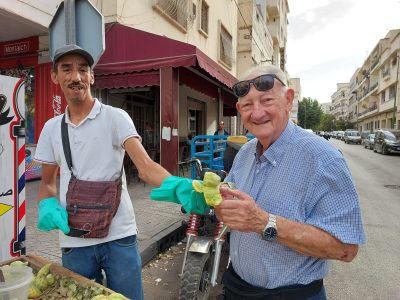
The receptionist suggested a restaurant in the old city for dinner. The restaurant sent a driver to fetch us with which we were well pleased because we would have thought we were being kidnapped as he drove through the crowded streets.
August is not
the month one would chose to visit Morocco, but when Eitan was to be an
official at the World Bridge Championships, we went. And it is hot, 46
°C on our first day.
The other thing
to know it is a little like being in Sinai, throw away your watch
because time
is slower here; registering at a hotel takes ages. But everyone is so
pleasant
after the initial annoyance everything is just fine. On arriving late
at the Movenpick
hotel in Marrakesh we wanted something to eat. Our cokes were served
with
delicious, not salty olives. No nuts but the waitress brought us three
breadsticks which was just enough to tide us over.
We
flew to Morocco a few days before the Championships and visited Fez
and Chefchaouen. While in Marrakech
Doreen took
the opportunity to
visit more of Morocco's attractions, including Rabat and Casablanca..
When we arrived
in Fes we showed the piece of paper with the address of the Ibis hotel
to a
taxi driver who wanted our business. He looked at the address and shook
his
head, mumbling something in Arabic. My heart dropped as we were booked
into a
three star hotel and I anticipated the worst. The next taxi driver who
stopped
us spoke a little English (most speak Moroccan and French) and told us
to look
up – our hotel was just across the street!
After unpacking
we went outside to have a drink and try the sabras on the carts;
delicious,
juicy and sweet.

The receptionist suggested a restaurant in the old
city for
dinner. The restaurant sent a driver to fetch us with which we were
well
pleased because we would have thought we were being kidnapped as he
drove
through the crowded streets.
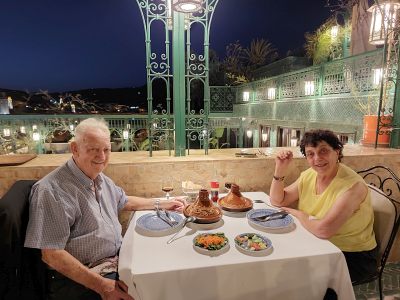
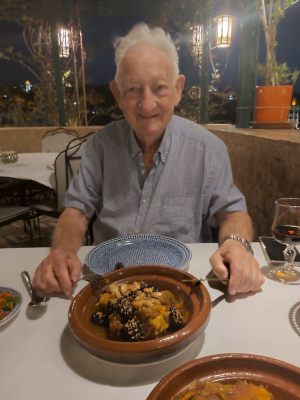

The restaurant,
Palais de Fes, was above an open square and entailed a lot of stairs
and an
elevator to reach the balcony. We were enchanted by the view of the old
city
with houses one of top of the other and mosques with square minarets
from where
the call to prayer was heard every few hours. The restaurant only had 3
course
set menus: Moroccan salads, various tajines and seasonal fruit. The
salads were
so delicious and plentiful that we had little space for the tajines.
Eitan had
Moroccan tzimmes – lamb with prunes and potatoes and delicious almonds.
I had
chicken couscous, surprisingly without pumpkin and gravy, which we
always
thought were essential ingredients in couscous. The square below was
full of
woman and children. When we asked where the men were, we were told they
were
drinking coffee and smoking in the small cafes nearby. Morocco, being a
very
conservative country, it would be unseemly for men and woman to sit
together at
a café.
Although the
hotel was only three stars and by the train station, it had a large
swimming
pool, an extensive garden and chickens running around.
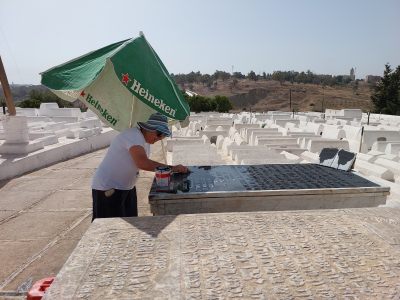
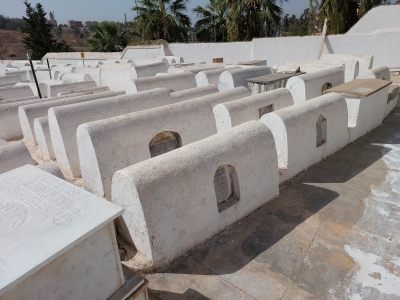
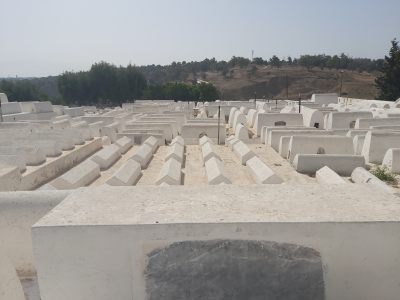
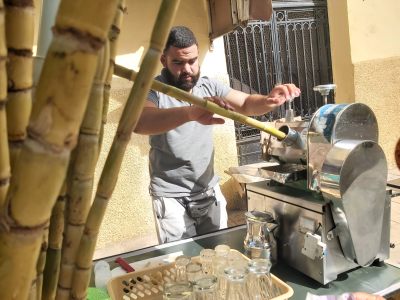 Outside I
couldn’t resist the cane juice with lemon and ginger, giving me a sugar
high
for quite some time.
Outside I
couldn’t resist the cane juice with lemon and ginger, giving me a sugar
high
for quite some time.
We walked to
the Ibn Danan synagogue, built in the 17th Century which is one of
North
Africa’s
oldest synagogues. When Jewish Moroccans left for Israel in 1948 the
building
fell into disrepair until it was renovated in 1996. As in other places
which
have only a few Jews, it is the tourists, of Moroccan origin, who come
here and
keep the place alive. The torah scroll is on view and if you don’t want
to walk
down the narrow steps, guides lift a heavy metal ring to show the
mikvah below
where Anusim were immersed when reconverting to Judaism after fleeing
Spain.
Our guide told us the synagogue was for Berber Jews from the Maghreb
region of
North Africa. They emigrated mainly to the USA and Israel.

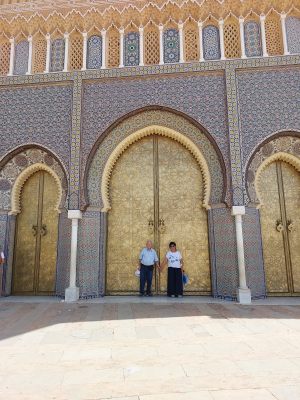 We saw the doors of the king’s palace, made from cedar
wood and covered
with
intricate copper patterns.
We saw the doors of the king’s palace, made from cedar
wood and covered
with
intricate copper patterns.We then drove
to the Southern panorama and fortress where we picked out the square
minarets
and a white one which was an observatory for stars.
Off to Art D’Argile
a huge cooperative where ceramics and mosaics are made in the
traditional
way. We loved to see how the artisan
working the wheel with his foot made a lid for a dish so exact it
fitted
perfectly and marveled at the women and men who painted and decorated
the
ceramics. Although we had stoutly announced we would not buy anything
the guide
was so charming and persuasive that not only did we buy a tajine (now
I’ll have
to find out how to cook with it) but also some fish shaped plates.
Suckers are we.
We marveled at
how the artisans cut floor tiles and hammered them into delicate
intricate
forms. The pieces are then laid down upside down, so when they are
turned over
they are completely straight and flat.
Fortunately the
mosaics, which were perhaps more fascinating in their production, were
too
large and heavy for us to even think of buying them. It is always a
delight to
see experts at work.
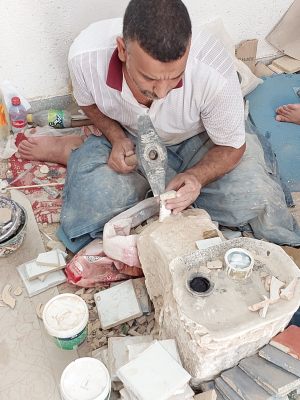
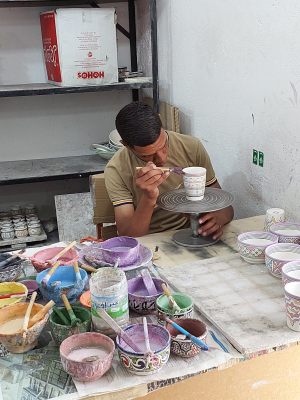
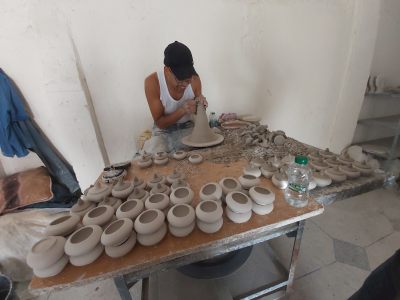
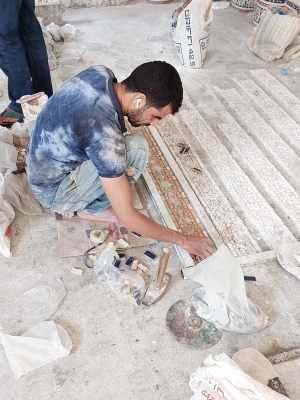
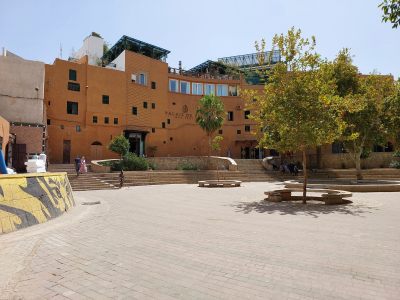
We entered the
medina which was cool, away from the burning sun and walked along the
narrow
streets where only donkeys or hand pushed carts could go. We learnt
that the
size of the doors reflected the house’s importance. Often there was a
smaller
door within a larger one – the first for family and the larger for
guests. Also
two different metal knockers – to distinguish between family and others.
We were
surprised by the many cats wandering around or lying in boxes letting
the
kittens feed. They are obviously looked after and feel quite at ease
with the
many people around them. We saw no dogs inside the medina.
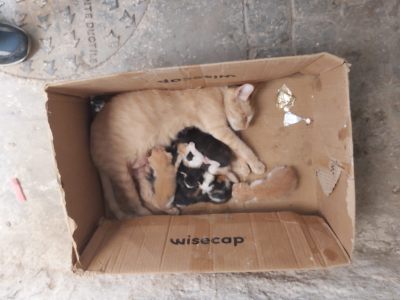
The shops were
varied: some women made extremely thin pastry which were cooked on a
round clay
stove and then filled with things of your choice. Just watching her
roll out
the paper thin dough on a well-oiled surface was a pleasure to watch.
The array
of olives and pickled vegetables, various kinds of dates, dazzled the
senses. At
a fish shop we saw baby leopard sharks, slabs of larger sharks,
sardines but no
salmon! Butchers sold beef and lamb and one even camel meat, but of
course no
pork.
The souk was
crowded and some lanes were very narrow and some even narrower.

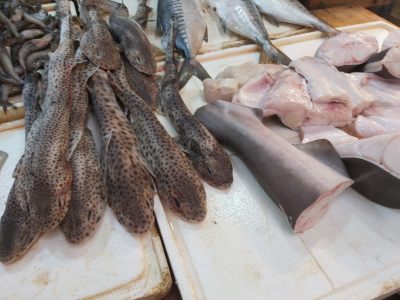
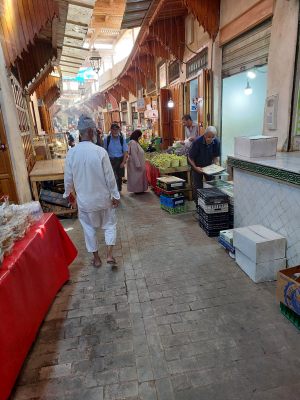
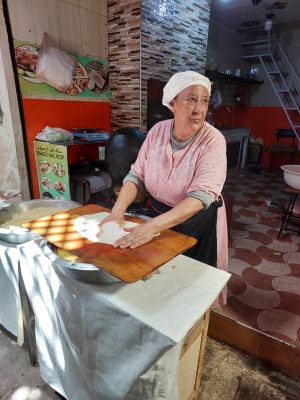
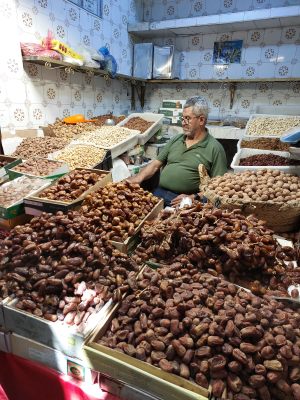
I was fascinated
by a fountain where people brought their used clothes to be dyed black. I tried dying once and found it an
incredibly messy and laborious procedure.
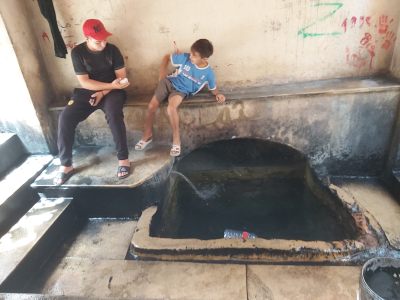
Then we came to
the material shops. Arabi said the colourful threads we saw hanging
were from
agave. Of course I didn’t believe him as agave comes from Mexico and he
must
have meant sisal. But the Saharan aloe vera cacti grow well here. After
the
silk-like fibers are taken from the plants they are washed, dyed, dried
and
then hand spun. Interestingly it is called sabra silk.
We saw piles of
brightly dyed wool, live wool, shorn from white living sheep that is
used for
fabrics and carpets. Black wool, from goats I presume is used for
making tents.
Dead wool taken from slaughtered animals
is used mainly for stuffing cushions etc. We entered a carpet ‘factory’
but as
we definitely weren’t going to buy I hesitated to ask them to show
rugs. But we
did see kilims made from sabra silk and other beautiful carpets.
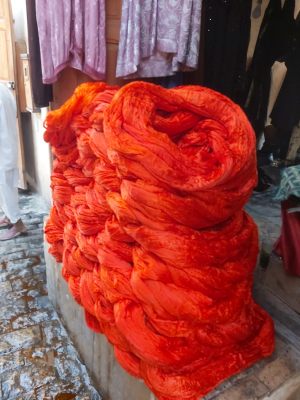

At Place Seffarine
we saw apprentices and artisans shaping copper sheets. Hearing the men
banging
on the metal we were reminded of the delightful part in La Traviatore
where the
gypsies bang in time to the music. There were also huge vats to rent
for
preparing food for weddings.
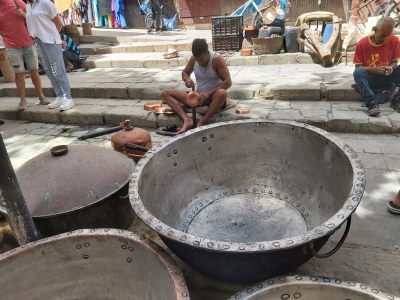
We admired the
Madrasa al-Attarine, its tiles and delicate, intricately cut plaster.
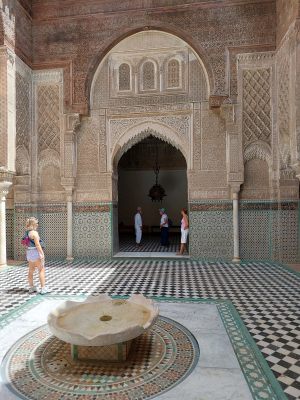
The University
of al-Qarawiyyin was founded as a mosque in the C9 by a rich woman from
Tunis.
It
became one of the leading spiritual and educational centers during the
Islamic
Golden Age.
UNESCO names it as the oldest continually operating
university and
the first degree awarding institution.
Of course we were impressed to
learn
that Maimonides and family had lived in Fes for a period
and he studied
at this
university where he composed his commentary on the Mishnah.
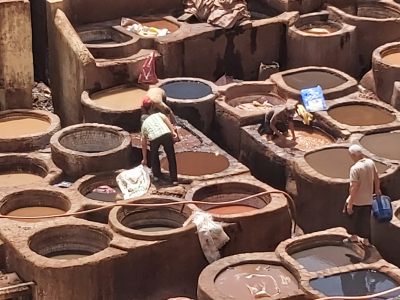
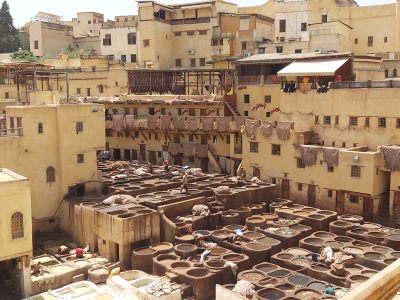 Then at last we
arrived at the site to see the tanners and
Then at last we
arrived at the site to see the tanners and
their dyeing vats. The
iconic
picture of the vats is taken
in winter when dyes of red, green, yellow are
used.
The stone vats are built and stand side by side. You may
never
wear
leather again after reading the following: skins
from sheep, cows and
camel are
soaked for three days in a disgusting mixture of cow urine,
quicklime
water and
salt,
softening the hides and removing the hairs and fat. Then they
are dunked
into new vats with water and pigeon feces that
contain ammonia, to help
absorb
the dyes.
Lastly they are submerged in vats that contain the dyes made
from
poppy flowers for red, saffron for yellow, cedar for
brown, mint for
green and
cobalt for blue. Afterwards they
are hung to dry and be scraped smooth before
being cut
and made into jackets, coats, bags and cushions etc.
No I
didn’t buy
a jacket as Maureen had just given me an excellent sienna-colored coat as a present.
We were ready for lunch and a rest, walking to a tall
airy
building that
once belonged to a minister. Again the
menu only offered three course meal of salads, tajine and fruit. Eitan
had
couscous and I had vegetables and we both missed the sauce so essential
to the
couscous I make at home.
By this time we
had had enough, and declined to see the wood museum and another
viewpoint. We
wanted to go straight to the van and back to the hotel. Our driver
assured us
that it would take time for the van to arrive and he didn’t want us
standing in
the hot sun. Instead we should visit the Argan oil factory with no
pressure to
buy. Fine. Half an hour later, after watching the woman cracking the
Argan nuts
with stones and removing the seeds, getting detailed explanations of
the
wonders of Argan oil, for which Israeli woman come especially to him to
buy, we
left. Of course we had bought Argan oil for the face and hair, cactus
extract
to reduce the bags under my eyes (hah ha) and black cumin to relieve
headaches,
asthma and blocked sinuses.
We had another
long walk to the van and back to the hotel. It was the longest half-day
tour
ever (5 ½ hours not including what we left out), but we enjoyed
it thoroughly. The
only bad part was in one of the narrow streets while Eitan was
negotiating a
step, a tourist coming the other way, pushed past him and he fell
backwards,
bruising his ribs and hurting his back. Without a word of complaint,
even
though in pain, he valiantly carried on.
That night, out- tajined, we decided to eat at the hotel,
in preparation for an early
start the
following morning.
Go to Eitan and Doreen's Home Page